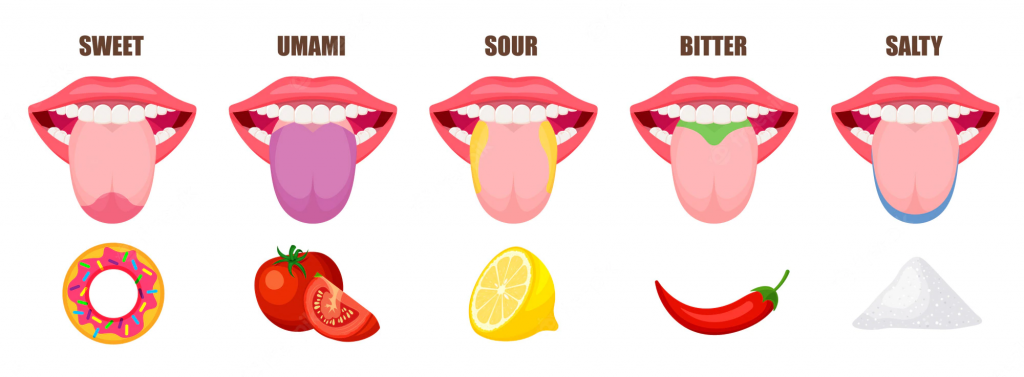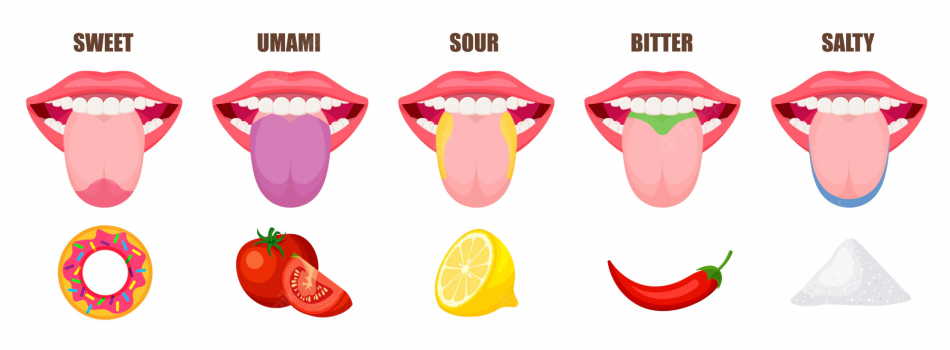Human taste gets stimulated when nutrients or other chemical compounds trigger specific receptor cells inside our oral cavity. Taste aids us in deciding which foods to consume and also influences the efficiency of digestion of these food items. The taste abilities of humans have been developed mainly through the niches in ecology that our ancestors resided in as well as the nutritional needs they were seeking. Early hominids sought nourishment in an enclosed tropical forest and probably ate a large number of leaves and fruit, and early hominids moved out to the savannah and increased their diet. They may have relied on their sense of smell to determine foods that were nutritious. The risks of making bad choices when hunting for food are not just the loss of energy and metabolic damage but also the lethal and possibly harmful consumption of toxic substances. The lessons learned from eating food items could later guide our food choices in the future. The developed taste skills of humans can be beneficial for the billion people living with inadequate food security, as it helps to identify the nutritional elements. However, for those with easy access to delicious, energy-rich foods, our sensitivities to salty, sugary, and fatty food items have also contributed to the development of nutrition-related illnesses like diabetes and obesity.

Human taste is primarily used for two purposes: it allows the assessment of food items for toxic and nutritional value while helping us choose what we should consume, and it also assists the body in metabolizing food items after they have been consumed. Taste perception is triggered by the molecules stimulating the taste buds of the epithelia in the oral cavity and the pharynx (back of the throat). Additionally, the taste starts the primal sensation of being ‘acceptable’ or ‘unacceptable’ to the tested foods. Taste is combined with smell and tactile senses to create flavors, which allow us to recognize foods as either familiar or new. If they are familiar, we can predict the effects on our metabolism of ingestion of the food. If it’s a new one, we can utilize these sensory signals to discover the physiological effects of ingesting. If the result is positive tasting, it will indicate satisfaction and pleasure – in part from the pleasant taste and due to the metabolic implications. Certain animals also use taste to detect chemical signals; however, there’s no evidence that humans do it.
The taste system of our body plays a variety of aspects in ensuring that we survive. As an omnivorous and hunter-gatherer species, our taste system helps us to identify healthy and safe food items in a diverse environment. Different tastes in food interact with each other along with different sensory signals to create flavors and give us an overall picture of a certain food item that can help us decide whether or not to consume it. Sensory clues send signals to the metabolic organs to prepare for the digestion of the food items that are entering our bodies. Our history, starting as apes thousands of years ago, living in tropical forests, and concluding with the spread of humans across every environment and climate, has led to our unique tastes and preferences for salty, sweet, sour, fatty, umami, and starchy food items. (To delve into the intricate details of human history, visit studycrumb.com) Additionally, we have an adaptive taste system that is able to alter its sensitivities based on internal conditions when there is a need for nutrition and when we are exposed to toxins, for instance, during pregnancy. In the end, all of these flavor traits and their properties are combined and utilized in feeding, and the metabolic effect of food creates associations with the flavors and tastes of food. These associations influence future decisions about food. Overall the sense of human taste is being considered a nutritional quality control mechanism. However, in contemporary environments, our sense of taste could lead us to consume highly delicious foods that are lacking in nutrients, a mistake which, if repeated, can cause sickness.
Contact us for the guest posting of content that positions your organization as a leader in education & research.



